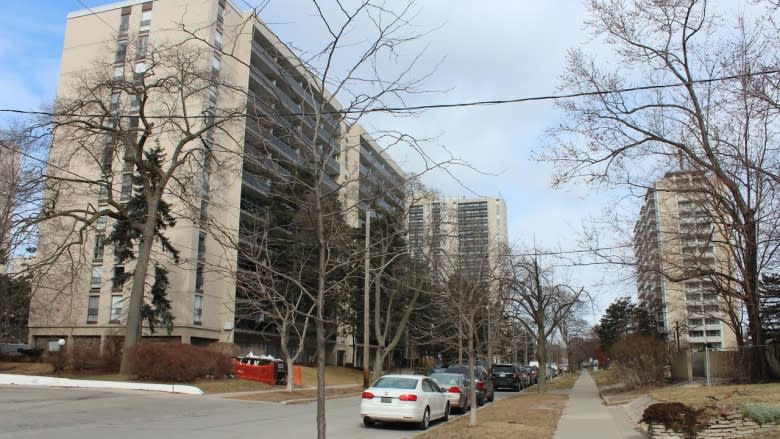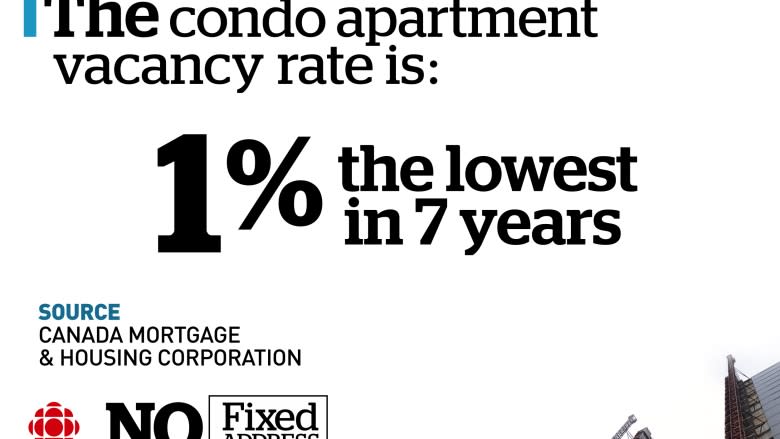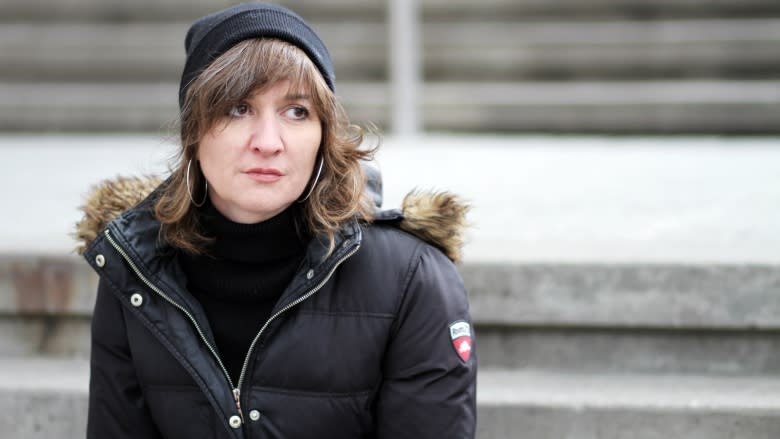High Park-area tower proposals offer 1,800 rental units — but at what price?
For more than 40 years, Cathy Brown has watched the High Park area grow and change.
She first moved to the quiet west-end neighbourhood in 1972 and raised her kids on Clendenan Avenue, a tree-lined street with stately, century-old homes that leads right into the city's largest park.
She left in 1998 and recently moved back to be close to her daughter — who now owns a house there, too — and says she's fond of the area's green spaces and sense of community.
But with two development proposals in the works that could lead to seven new high-rise rental apartment towers and thousands of new residents, Brown started to wonder: Could High Park get too crowded for its own good?
"We're very worried about the double density," she says.
What's happening in High Park is a case study for something that could be happening more and more in Toronto: New rental development in older neighbourhoods, creating both much-needed rental stock for people hoping to stay in the city — and stirring up backlash among those who've long called established areas home.
Despite worries about everything from crowded subways to a loss of green space, these clashes could be the new norm thanks to the "huge demand" for new rentals across the city, says Graham Haines, research manager with Ryerson University's City Building Institute.
Right now, the city's vacancy rate for condo apartments is one per cent — the lowest in seven years, according to the Canada Mortgage and Housing Corporation — and the average monthly rent for a one-bedroom condo apartment is nearly $1,700 a month.
And as the Toronto Real Estate Board noted in a report, rental transactions were down during the last three months of 2016, but not because of declining demand: There's just a lack of units available to rent.
That's despite plenty of cranes in the sky, building new condo developments throughout the downtown core. Last year, 18,000 condo units were completed, according to an Urbanation analysis, compared to just 1,700 rental units.
Haines believes purpose-built rentals are crucial, and not just in the heart of the city.
"We need to start thinking about ways to get that not just in new developing neighbourhoods like Liberty Village or CityPlace, but into some of our more interesting and more established neighbourhoods like High Park — and that will come with tension," he says.
'It's not just about height'
The latest proposals in High Park come from developers Minto and GWL Realty, and both are at least four years away.
Minto's application to the city late last year includes 37 three-storey townhouses, one 33-storey tower, one 29-storey tower, an eight-storey podium and a new two-storey amenity pavilion, while GWL Realty's application includes a 39-storey tower, a 34-storey tower, a 29-storey tower, and an eight-storey tower.
All the proposed towers are slated within two blocks of each other, between High Park Avenue and Oakmount Road, and much taller than existing buildings.
That much development is "harmful to the balance of the neighbourhood," says Brown, who is co-chair of High Park Community Alliance, the newly-formed group opposing the possible density spike, loss of green space, and influx of subway riders.
Alongside Ward 13 Coun. Sarah Doucette, Brown's group is pushing to have the two proposals trimmed down. Fewer towers, perhaps, or fewer floors.
From a city perspective, there's no specific policy direction on building height in High Park, notes Sarah Henstock, a community planning manager with Toronto's city planning department who handles the Etobicoke York District, East Section.
However, she says city planners always refer to city-wide urban design guidelines and policies to determine appropriate building heights and the impact of that development.
But it's not just about height, Doucette adds. "It's about the massing. It's about the wind tunnels. It's about the shadowing. It's about how much traffic you're bringing, how many people you're bringing."
'Merit' in redeveloping older neighbourhoods
However, Doucette acknowledges the roughly 1,800 rental units they'd provide would be a good thing, helping to boost the city's much-needed rental supply.
And for renters like Jeanne Davis hoping to live in a particular area, that kind of influx of rental units offers more choice.
Davis, who's trying to find a two or three-bedroom apartment in the west end after selling her house, wants to stay in the area so her 11-year-old son remains close to his school and friends, but finding an affordable unit is proving tricky.
"I saw quite a nice place which was billed as a two bedroom, and the second bedroom was actually a closet," she recalls. "It was a walk in closet, it even had hangers on the side. No window."
The rent? A whopping $2,350 a month.
Davis says more units on the market would be helpful, but she acknowledges the concerns about high-rises popping up in communities filled with detached homes.
Beautiful, historic neighbourhoods like High Park, she says, shouldn't be overshadowed, "literally and figuratively," by giant towers.
Haines understands that people can be hesitant about adding density to their neighbourhood, but says developments in older areas like High Park aren't cause for concern.
"Neighbourhoods like that, that are close to the subway line and close to excellent green space, they do have some merit in getting redeveloped," he says.
Changes should 'provide homes for more people'
Matthew Kingston, vice-president, development at Minto, agrees.
The High Park neighbourhood was a "phenomenal" one for a new development, he says, thanks to its proximity to the park and the fact that it's one of the lesser-used subway stations. (TTC ridership data from 2014 shows the High Park stop has under 10,000 riders a day.)
While he stresses the benefits of development projects for modernizing communities and improving the quality of life for apartment residents, Kingston says public consultation is crucial.
Minto started reaching out to Doucette's office last March, held a public open house with the community, and plans to hold a future working group with community representatives, he notes.
Still, Kingston says, "no matter what you do, you're never going to make 100 per cent of people happy."
But whether people like it or not, Toronto neighbourhoods are going to change, says Paul Kershaw, founder of advocacy group Generation Squeeze.
So, he says, they should be changed in ways that provide homes for more people. And while city staff and developers are right to engage people who live in changing neighbourhoods, Kershaw says they also need to engage people who would like to live there.
26 new rental buildings in the works
The bottom line? City officials say broader development is a reality as the city keeps growing.
There are 26 new rental buildings currently in the pipeline, or under construction, according to chief city planner Jennifer Keesmaat. "For the first time in a generation, we are seeing purpose-built rental coming to the market," she says.
Henstock says all new development needs to adhere to city policies about maintaining the general context of an area and residents' quality of life, privacy, and access to sunlight. Comments and concerns of community members are taken "very seriously," she adds.
Henstock also says city planners are receiving various types of development applications in areas where, in the past, they hadn't anticipated much new development, throughout downtown and "out in the districts."
Old neighbourhoods will keep experiencing new rental development, it seems — and all the friction that comes with it.
"This is something we as Torontonians are going to have to come to grips with," says Haines.
The High Park proposals are now with city planners, and finalized plans are still likely years away.
No Fixed Address
CBC Toronto has been sharing your experiences for our ongoing series on renting in Toronto. Check out our Facebook group or some of our previous stories.






